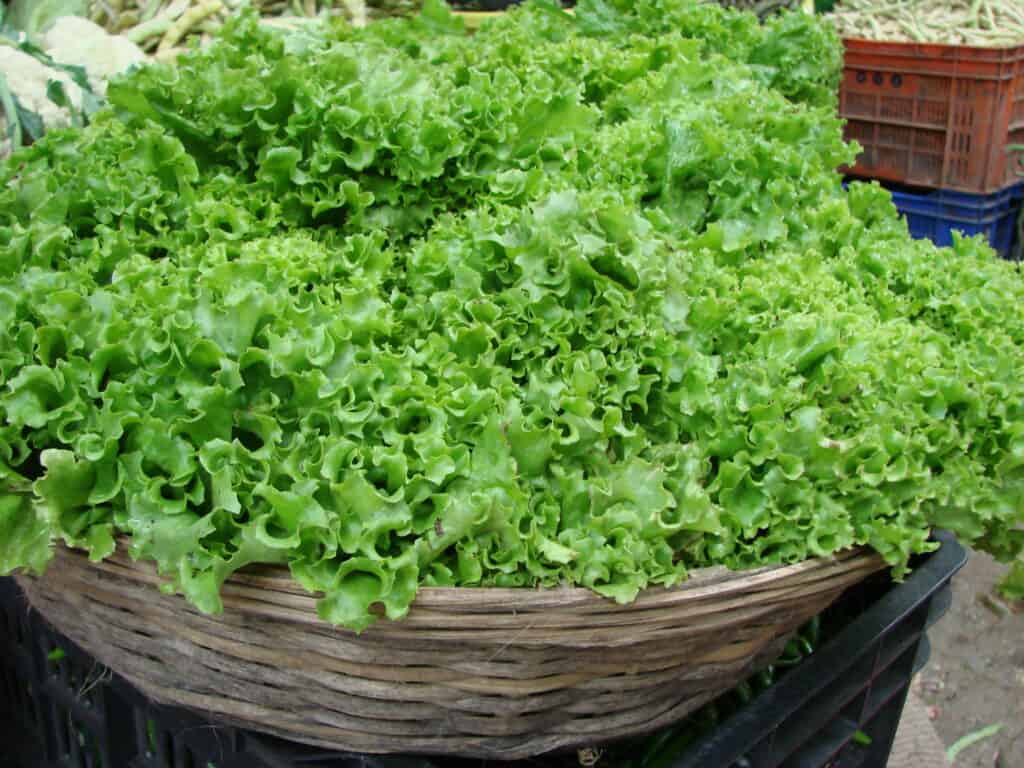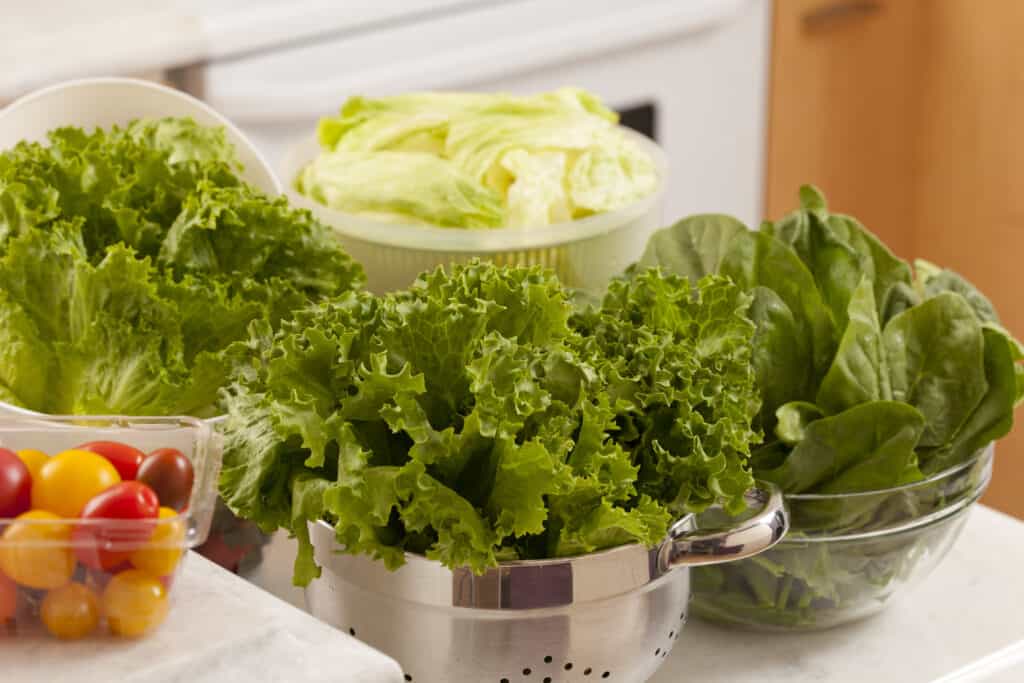Harvest endive and escarole when the leaves are large enough to eat. Endive and escarole mature 50 to 70 days after sowing but they can be harvested sooner.
Endive is also called curly endive and frisee—it has frilly or ruffled leaves. Escarole is also called broad-leaved endive—it has smooth, broad leaves. Endive has a sharp almost bitter taste. Escarole is usually less bitter than endive.
Related articles:

When to harvest endive and escarole
Harvest endive and escarole almost any time during growth—when leaves are just 2 to 3 inches long or after a head forms and are firm to the touch.
Grow escarole and endive and escarole spring to early summer and late summer to fall. The optimal growing temperatures for these crops are in the 60°sF (15°-20°C).
Sustained temperatures in the mid to high 70°sF (21°+C) will cause endive and escarole to send seed stalks (called bolting) and become bitter. If hot weather is predicted it is better to harvest the crop and store it in the refrigerator than let it become inedible.

How to harvest endive and escarole
- Endive and escarole can be harvested whole. Cut the head away from the roots a little above the ground with a serrated knife. If the weather is cool, but not cold, leaves will re-sprout from the crown of the plant and be ready for picking in about two weeks.
- Endive and escarole also can be harvested leaf-by-leaf if you don’t want to pull or cut the whole plant at once. Snip or break away older leaves—whatever size—from the outside allowing younger leaves at the center (called the central bud) to continue growing for later use. This type of harvest is called “cut-and-come-again.”

How to store endive and escarole
- Store endive and escarole in a cold and moist place (32°-40°F (0°-5°C) and 95 percent relative humidity). Place leaves or the whole head in the refrigerator in a perforated plastic bag in the vegetable crisper section.
- Endive and escarole will store in the refrigerator for about two weeks.
- Endive and escarole that matures in cool or cold weather will hold in the garden for several weeks if protected by a thick layer of straw mulch or a plastic tunnel or cold frame.
Kitchen tips: Endive and Escarole Serving Tips
Growing tips: How to Grow Endive and Escarole
Related articles:
How to Plant and Grow Endive and Escarole
Edive and Escarole Seed Starting Tips
How to Harvest and Store Endive and Escarole
Escarole and Curly Endive Serving Tips
How to Grow Chicory and Belgian Endive
How to Cook and Serve Belgian Endive
How to Plant and Grow Radicchio
How to Harvest and Store Radicchio
Four Ways to Cook and Serve Radicchio
Garden Planning Books at Amazon:
- Vegetable Garden Almanac & Planner
- Kitchen Garden Grower’s Guide Vegetable Encyclopedia
- Vegetable Garden Grower’s Guide
- Tomato Grower’s Answer Book
More harvest tips:
Learn when and how to harvest your favorite vegetables for the best flavor and texture. Get storage tips for each crop. Click on the vegetable you are growing below.
- Artichoke
- Arugula
- Asparagus
- Beans
- Beets
- Broccoli
- Brussels Sprouts
- Cabbage
- Cantaloupe — Melons
- Carrots
- Cauliflower
- Celery
- Chard
- Collards
- Corn, Sweet
- Cucumbers
- Eggplant
- Endive and Escarole
- Garlic
- Jerusalem Artichoke
- Kale
- Kohlrabi
- Leeks
- Lettuce
- Melons
- Okra
- Onions
- Parsnips
- Peas
- Peppers
- Potatoes
- Pumpkins
- Radicchio
- Rhubarb
- Rutabaga
- Spinach
- Squash, Summer
- Squash, Winter
- Sunchokes
- Sweet Potato
- Swiss Chard
- Tomatillo
- Tomatoes
- Turnips
- Watermelon



